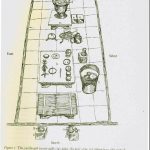
Roj Asman Mah Khordad, 1382 Yz.
The little Avesta scripture that remains with us today is filled with numerous curiosities. Within the Avesta, the Gathas are easily the most complex to translate and understand. A mere four or five line stanza of hardly 25 words can throw up great challenges to even the most ardent student of our religion. Indeed many scholars have accepted that even after decades of study, the Gathas remain a mystery to them.
The Avesta has a number of ‘set phrases’ which keep on repeating over and over in different places. Perhaps the most common phrase, which many of us who recite the Avesta regularly come across very often is: ‘peresat Zarathushtro Ahurem Mazdam’ i.e., Zarathushtra asked Ahura Mazda. The reply formula is ‘aat mraot Ahuro Mazdao’, Ahura Mazda replied. This sentence formation is very common and is used to describe the conversations which Prophet Zarathushtra had with Ahura Mazda.
But there is one sentence construction in the Gathas which is a bit different and raises many questions. In the Ushtavad Gatha (Yasna 44), the normal ‘peresat Zarathushtro Ahurem Mazdam’ is changed. Here, the Avesta reads: ‘Tat thwa peresa, eresh moi vaocha Ahura’ – this do I ask Thee, answer me truly, O Ahura.
The way this sentence is constructed raises some questions. First of all, who is asking the question? Since the Gathas were composed by Prophet Zarathushtra, it is assumed by all that it is indeed Zarathushtra who is asking the questions. But the manner in which the question is asked seems a bit rude. Why does Zarathushtra (if indeed it is Zarathushtra asking the question) ask Ahura Mazda to ‘answer me truly?’ Does that mean that there is a possibility that Ahura Mazda may be lying? The operative word is ‘eresh’ – true, truly (in Gujarati what we call ‘khare kharu’). Even in the Pahlavi translation of the Gatha, the Pahlavi word used for eresh is ‘rast’ – true. Why this construct?
Yasna 44 is one of the most deeply mystical and poetic compositions in the Avesta. Its 20 paragraphs all follow this common opening sentence – this do I ask Thee, answer me truly, O Ahura. Then follow some questions, many of which may seem even childish: how can I gain friendship with Thee, who made the sky and the stars, who makes the moon wax and wane, which artist made darkness and light, which artist made sleep and waking and so on. But surprisingly, there are no answers! The entire chapter (Ha 44) only seems to contain the questions (supposedly asked by Zarathushtra) to Ahura Mazda. But where are the answers? Our scholars have no reply. Why the emphasis on getting the right answer? (even though no answers seem to be given?) Our scholars have no reply.
Readers of Frashogard may realize by now that the Zoroastrian Mystic revelation of Khshnoom always has the answers. These answers make one jump with joy, they provide us with a feeling of deep, intense inner joy, what is known in the Pahlavi as ‘urvakhmani’ – inner bliss. That is the beauty of Khshnoom.
Dr. Saheb Framroze Chiniwalla has of course translated all the Gathas in separate books. His book on Yasna 44 was one of the most eagerly awaited as it was expected that he would provide us with the answers to the questions. But it was a long wait. The book on Yasna 44 was printed in 2010 – nearly 50 years after Dr. Saheb passed away. It is in this book that the mystery of the questions and their answers is finally revealed in a most masterful way.
Doctor Saheb explains the meaning of the phrase ‘Tat thwa peresa, eresh moi vaocha Ahura’ very beautifully. He reveals that there is no question about Zarathushtra doubting Ahura Mazda or the Creator lying. Indeed Doctor Saheb clarifies that these questions are not asked by Zarathushtra at all! He enlightens us that in various places in the Gathas, Zarathushtra is described as having Perfect Wisdom, as being in total consonance with Ahura Mazda, as being so exceptional (‘aevo’) that He is on the same level as the Amesha Spentas. Then why would Zarathushtra ask these questions? Would he not know the answers already? Is this not a contradiction?
Rather than Zarathushtra asking the questions, Doctor Saheb reveals that Zarathushtra directs each of us to ask these questions to Ahura Mazda! We must remember that the Gathas are part of the 72 chapters of the Yasna, which are recited during the Yazashne ceremony, which is performed for the Ruvans of the departed. Thus Doctor Saheb explains that each Ruvan, when it departs from the physical body and begins its long journey through the regions of Chinvat, has to pass through various levels of study and labour. These regions are more deeply explained in the series Wondrous Circle of Life. As it passes through these regions and becomes more and more advanced, the Ruvan is guided by the Manthra prayers recited by the priests on the directions of their relatives. As the benefits of these ceremonies and Manthras reaches the Ruvan, it begins asking the questions included in Yasna 44.
But what about the ‘answer me truly’ part? Doctor Saheb explains that there is a great mystical import to this phrase. What is Truth? What is reality? Is it what we perceive with our physical senses? No. That is not reality, that is merely our perception of reality. To give a common example, in school we studied that the ‘sun rises in the east and sets in the west.’ As we moved to the higher classes, we studied that the sun neither rises nor sets, it is merely the earth which is moving which gives us this feeling. Hence our physical senses – eyes, ears, tongue, hands are always giving us a perception of reality, but not the truth. It is the physical senses which misguide us, which lead us into sin, which leave us with feelings of inadequacy and want.
Thus Doctor Saheb explains, as the soul begins its real education in the regions of Chinvat, it implores Ahura Mazda to reveal to it the Truth and Reality as it exists in Nature, not that which is perceived by the physical senses. The Ruvan beseeches Ahura Mazda to give it a glimpse into the real working of the entire Cosmos – a peak into the Wondrous Spiritual Drama which goes on constantly, of the Yazatas and Amesha Spentas working ceaselessly and in complete unity and harmony with each other, furthering the Plan of Ahu as described in the Yatha Ahu Vairyo prayer, leading each and every aspect of Creation towards Frashogard – its ultimate Salvation.
This is the true meaning of the phrase ‘eresh moi vaocha Ahura’. Ahura Mazda never lies and Zarathushtra never doubts Ahura Mazda – it is our own faith which leads us to doubt our Prophet and our Creator in times of trouble and distress. Whenever a little difficulty comes in our way, we lose our bearing, we become uncertain, we begin to question God, we begin to look for ‘shortcuts’. This is because our physical senses and our extremely short time frame cannot bear even a little suffering, which may actually be good for us in the long term. Our vision is limited to the next few days, or months or years, or maybe this life. But the vision of Zarathushtra and Ahura Mazda extends till the very end of time, till we will meet with Them and attain Salvation. In that time frame, a little difficulty is not even a hiccup.
Readers of Frashogard, the beauty of Avesta lies in such little gems. Doctor Saheb has used nearly 300 pages to explain the 20 paragraphs of Yasna 44. He explains that the answers to the questions are actually hidden in the questions themselves. Using the same grammar of the scholars, but with the added wisdom of Khshnoom, Doctor Saheb has translated each of these paragraphs and given the answers to the many questions that lie within them. It is beyond the scope of this article to give those answers.
But a little glimpse. The very first question that the Onward Progressing Soul asks Ahura Mazda is this: ‘how shall I meet Thee and attain everlasting bliss?’ What a question! The answer, woven into the paragraph itself, and revealed by Khshnoom is this: ‘You can meet Ahura Mazda only through Those who work for Him. Those who work for him are called His Yazatas. How to meet the Yazatas? Through ‘nemo’ – prayer. When we (the Parsi and the Ruvan contained within us) begin the proper practice of prayer, (which includes the practice of Tarikats) a power arises within us. This power is called Sarosh. The power of Sarosh enables us to develop our senses such that we attract the attention of a Ratu, an Ustad, a Master, who will take us under his benevolent patronage and guide us on the long road to salvation. Through the intercession of the Ustad, we will, slowly, over many lifetimes, become ‘yaz’, attuned with the Yazatas who work for Ahura Mazda. As we become attuned with them, we will ourselves undertake to further the Plan of Ahura Mazda, and thereby attain Everlasting Bliss.
Thus Doctor Saheb explains, the first step to Salvation is prayer. At the end of all our prayers, it behooves us to stop asking for this or that, but merely to ask for the Righteous Ustad, who can deliver us to salvation. Readers of Frashogard, those of us who have faith and belief in our own Ustad Saheb Behramshah Nowroji Shroff, have already taken the first step on that long road to salvation. Soon, (relatively speaking), we shall be able to ask the question – ‘This do I ask Thee, answer me Truly, O Ahura!’
May that day come soon!
Ervad Marzban J. Hathiram
Related posts:
NOV




